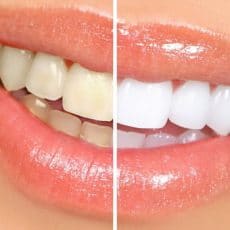 Your teeth may be discolored due to the natural aging process, stains from coffee, tobacco, soda and tea, tartar and plaque buildup, or trauma to the teeth that can cause discoloration.
Your teeth may be discolored due to the natural aging process, stains from coffee, tobacco, soda and tea, tartar and plaque buildup, or trauma to the teeth that can cause discoloration.
Whatever the reason may be, teeth whitening is one of the most common procedures to achieve that dream or recover smile you’ve always wanted.
What’s the difference between Tooth Whitening and Tooth Bleaching?
Tooth whitening is usually done using consumer whitening products such as whitening toothpastes and results in making teeth one shade lighter.
Tooth whitening should not be undergone by children age 16 and below, lactating or pregnant women, and people with sensitive teeth and allergies. Tooth whitening is also discouraged for people with gum disease, worn enamel, exposed roots, and previous tooth restorations (such as fillings, crowns, etc.).
If you experience tooth sensitivity, give your teeth a break by using toothpaste for sensitive teeth, or consult a dentist for a product with fluoride.
Always remember to check to see if your chosen whitening product has been approved by the Australian Dental Association to ensure that it is safe to use.
Tooth bleaching utilises either hydrogen peroxide or carbamide peroxide (which is 1/3 as strong as hydrogen peroxide) and can make teeth three to eight shades lighter.